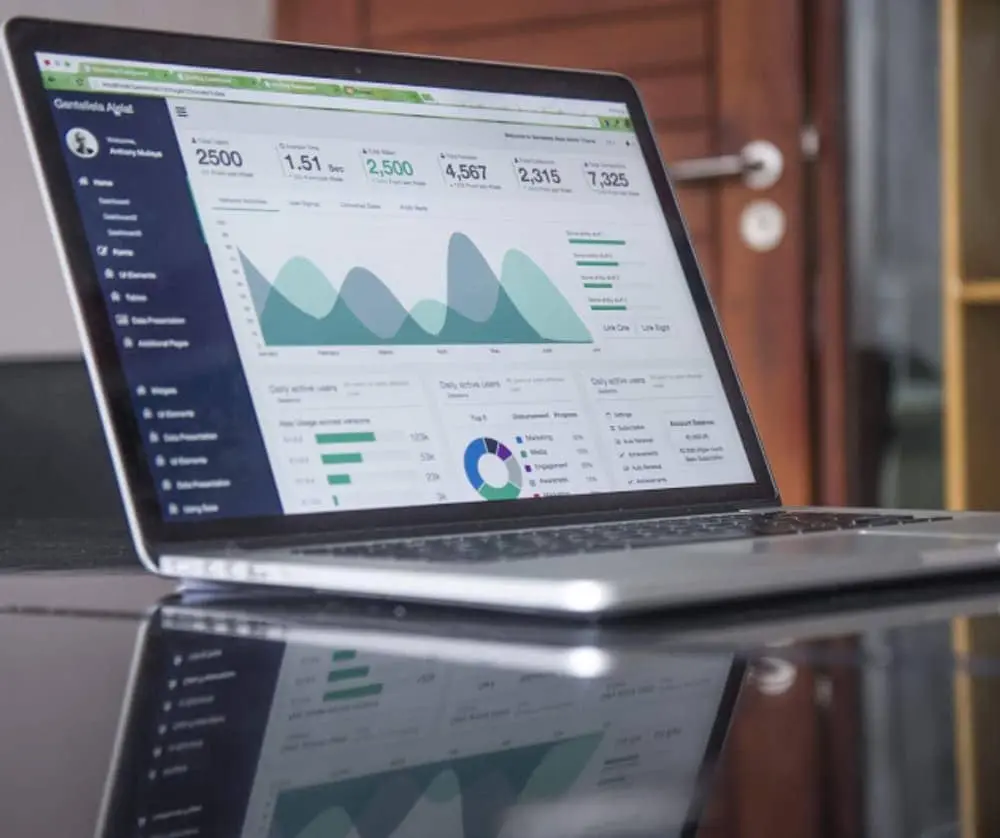
Why Choose Hand-Coded Websites Over WordPress Sites?
Exploring The Benefits of Static Websites (Hand-Coded) vs Dynamic Websites (WordPress, Wix, etc.)
While platforms like WordPress offer flexibility and database functionalities, hand-coded static sites stand out for their speed, security, and performance, especially for informational websites or businesses aiming for a superior online presence.
In this article we'll compare and contrast the two approaches, and take you through why we think static websites are the way to go.
Highlights:
-
Speed and Performance: Hand-coded static websites load significantly faster (up to 10 times) than WordPress or Wix sites. Faster load times are critical for user engagement, as users tend to abandon sites taking more than 3 seconds to load.
-
Mobile Optimisation: Static sites, especially when coded with a mobile-first approach, offer better optimisation for mobile devices. Google ranks websites based on mobile performance, and static sites excel in this aspect.
-
Security: Static sites are less prone to hacking compared to dynamic sites like WordPress, which often require regular updates and can be vulnerable due to plugins and databases.
-
Technical Differences: Static sites use HTML, CSS, and JavaScript, while dynamic sites involve server-side languages and databases to generate content. Static sites deliver consistent content to all users, while dynamic sites serve personalised content.
-
Mobile-First Programming: Static sites allow developers to prioritise mobile responsiveness in code structure, ensuring faster and more efficient loading on mobile devices.
-
Cost and Investment: While platforms like WordPress and Wix allow DIY website creation, investing in a hand-coded static site could yield better returns in terms of performance, security, and conversions.
-
Static Site Advantages: These sites offer simplicity, better control over code quality, and easier reading for browsers and search engines. They're ideal for information-focused websites.
Websites can be divided into two main types: static and dynamic. Think of a static website like a simple, basic display. It's made using a few fundamental coding languages, and it shows the same thing to every person who visits. It's like a picture that's already been taken and doesn't change.
On the other hand, a dynamic website is more like a puzzle being put together as you look at it. These websites use extra computer languages and systems to build the web page while you're actually looking at it. This means each person might see something slightly different. However, this process can make the website slower to load and more vulnerable to problems like hacking.
The websites you might have heard of, like WordPress, Wix, Squarespace, and others, fall into this dynamic category. They gather information from a database to create the web page you see when you visit them. Although these platforms make it easier and cheaper to create a website, they can have some downsides compared to simpler websites like the ones we create.
Static sites, like the ones we build, are less complex and don’t use these databases. They are simpler, load faster, and are less likely to have security issues compared to the more complicated dynamic sites.
Why do static websites outpace dynamic ones?
Well, think of it this way: the speed of your website is crucial for how Google rates it, especially on mobile devices. Dynamic websites like WordPress or Wix take longer to put together because the server has to gather information from databases. Moreover, if you have many add-ons or extra things on your site, it'll only slow things down more. Studies show that most people abandon a website if it takes longer than 3 seconds to load. So, if your website takes that long, why bother having it if users won't even see it? That’s a significant issue with WordPress and Wix sites – they often take too long to load, resulting in potential monetary losses.
On the flip side, static sites can load up to 10 times faster than dynamic ones because they're already fully built. There are no extra plugins or databases hogging space. Each line of code in my sites has a clear purpose and is well-organised, making it easy for Google to comprehend. Dynamic sites, like WordPress, tend to have loads of messy code that further slows down loading times.
Let’s use a food analogy to understand this better. Imagine having a plate of tangled spaghetti and another plate with neatly arranged portions of ten noodles each. It's much quicker and simpler to count and organise the noodles when they're neatly arranged, right? This is similar to how static and dynamic sites work. Dynamic sites have what's called "spaghetti code" – messy and complex. This makes it harder for browsers and Google's search crawlers to understand your website content, leading to longer loading times.
A standard benchmark for website load time is 2 seconds. Our hand-crafted static websites often load in under 0.5 seconds – significantly quicker than average, almost instantaneously. The well-structured and organised code makes it easier for both browsers and Google to interpret, improving load times, retaining customers, and enhancing your site's Google ranking. If your site isn’t performing well in bringing in business, it might be worth checking its load time using Google’s tools.
It's worth noting that Google ranks websites based on how well their mobile versions perform. This is called Mobile-First Indexing. The faster your mobile site loads, the higher you rank. This is where static sites have the upper hand every time.
Speed increases through mobile-first programming
Mobile-first programming is a technique that can’t be pulled off by your usual page builders. Here's the deal: it's a design strategy where us developers start by coding for mobile screens first and then add code for tablets and desktops as we move through the file. Why does this matter? Well, when the browser reads the CSS file to understand how the page should look and feel, it goes through it from top to bottom. If we begin with desktop code at the top, the browser reads that first, then checks for rules for different screen sizes, finally adapting the desktop content to fit into a mobile layout. Sounds like a bit of a jumble, right?
But with the mobile-first approach, it's all streamlined. The mobile code comes first, right at the top of the CSS file. So, when you load the site on your phone, the browser focuses on that mobile styling code first, checks the screen size rules, and boom – it’s ready for the mobile stage!
Trust me, from my experience, it's much simpler to design content that expands to fit spaces than trying to squash it down to smaller sizes. When you pair mobile-first programming with static site development, the result is a website that's lightning fast. It might even leave some people surprised!
Why fork out money for someone to build your website when you can DIY, right?
Platforms like Wix and WordPress offer free website creation, tempting small businesses who lack the funds to hire a developer. But hold on! If you care about page speed, loading times, security, attracting more customers, and acing those Google rankings, it might be wise to consider a static website built by a pro (like us!). Let's think of it this way: anyone can grab some paint and try to spruce up their house. But not everyone can match the quality of a professional painter. And just like painting, web development is a craft that can get a tad pricey. A static site crafted by a developer could cost you anywhere from $1500 to $3,000+, depending on complexity. So, while it's tempting to opt for page builders and save cash, if you're serious about taking your business up a notch, investing in a static site might just be the game-changer you need to outshine the competition.
Now, hold on a sec! Not all WordPress developers are shady or produce subpar products. There are many who make custom WordPress sites with genuine care and skill. WordPress shines in complex scenarios where you need a website that dynamically builds pages from a database, caters to online stores, blogs with self-editing capabilities (although we can do this too), or custom applications requiring database functionality. But here's the thing about static sites—they're unchanging. They're ideal for simply displaying information without manipulating or generating new content for each and every visitor. Using WordPress solely for informational sites is a bit like using a jackhammer to drive in a nail.
Sure, your competitors might also have WordPress sites. But here's the kicker: many developers or agencies charge a fortune for basic WordPress sites that could have been made static. Plus, some of these turn out to be template-driven, unsupported creations. Finding a reliable developer or agency might be tricky, but it's totally worth the effort. Just sift through the pile and you'll spot the diamonds in the rough.
Consider your website an investment
In my experience, I've observed two types of people: business owners and entrepreneurs. A common mistake among many business owners regarding websites is seeing them solely as an expense rather than an investment. Entrepreneurs, however, recognise that investing in the business isn't just an expense; it's a strategic investment. They gauge the value by anticipating the return it will bring. For instance, imagine investing $3000 in a professionally crafted static site. Initially, it might seem like a significant expense, but with an enhanced, polished, and high-performing site, you could potentially convert visitors into customers who might otherwise leave due to slow loading times or an outdated appearance. Suddenly, that $3,000 investment starts generating an extra $10,000 a year or more in new business over time. If you could spend $3,000 and make $10,000 in a year, wouldn't you consider that an “investment”? These numbers might sound hypothetical, but they can be achievable. Businesses have experienced doubling of sales after a year of collaboration using static websites.
Let's dig into our approach. We offer websites at a rate of $125 a month. You might question, "Why pay monthly for years?" Consider this: do the benefits of my static sites outweigh the $125 monthly investment? Almost always, the answer is 'yes'. For example, think of a painter who earns $800+ per new client. If our site brings in just one additional client per month, that's a $675 return. Plus, every new customer gained each month adds value derived from our sites. For that $125 a month, you're not just receiving a website; you're securing someone available on call to manage your website, make updates aligned with search algorithm changes, and address any queries you might have. You're getting more than just a website; you're acquiring a committed partner invested in your business's success.
Websites aren't unlike any other investment. You often get what you pay for. If you opt for a $300 website from platforms like Fiverr, expect something usually generic or outdated that might not attract potential customers. Just as when selecting a skilled artisan, finding reputable developers requires careful consideration. They should have the expertise to address all your concerns and deliver a high-quality, aesthetically pleasing product.
Although numerous cheap and quick website-building options exist, it's crucial to understand that a top-notch website rarely comes from that price point. In fact, it should raise a red flag. If I needed a significant medical procedure, I wouldn’t trust a doctor found online offering it for a fraction of the cost compared to other professionals. It suggests compromised quality and shortcuts taken to maximise profit with minimal effort. Your business deserves better. If you settle for a budget site, expect budget results. But if you seek excellence, that's where a skilled developer comes in.
Wrapping up
Ultimately, whether you choose a static or dynamic website depends on your budget and needs. If you're tight on funds and require a basic online presence, platforms like WordPress or Wix could work. But if you're aiming for a robust online visibility boost, investing in a custom static site might offer a higher return.
Our business model offers a solution that negates the need for choosing between a DIY approach or costly developers. Instead of an upfront fee of $2500 or more, we provide a standard package of NO upfront payment, and a $125 monthly subscription plan ongoing. This structure is geared towards providing accessible web solutions, especially for small businesses, while they handle their daily operations. We're committed to crafting long-lasting websites at a fraction of the usual upfront cost. We're here to support your business journey at every stage.



